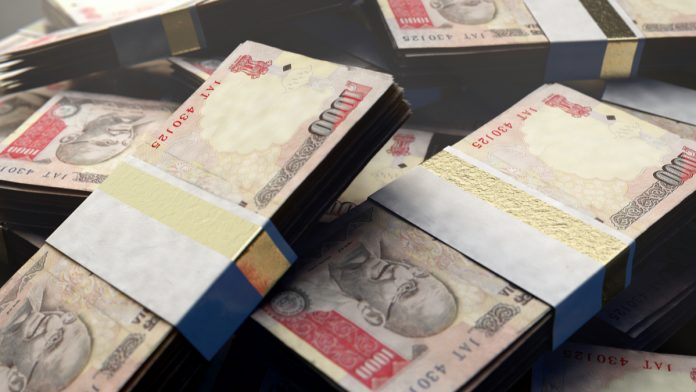- Indian Rupee (INR) rises along with domestic equities
- Oil rises as Saudi rebuffs supply rumors
- US Dollar (USD) falls versus major peers
- Fed speakers in focus
The US Dollar Indian Rupee (USD/INR) exchange rate is rising after six straight days of gains. The pair rose +0.14% yesterday, settling at 81.72. Today, at 10:30 USD/INR trades -0.03% at 81.70, trading in a range between 81.64 to 81.83.
The Indian Rupee is tracking domestic equities higher after a three-day decline. However, the move higher has been modest and lacks any clear drivers. Investors remain cautious ahead of the minutes from the FOMC due tomorrow.
India equities had fallen over 1.3% across the past three sessions on concerns over rising COVID cases in China and following hawkish commentary from James Bullard.
Separately oil prices are rebounding after Saudi Arabia’s energy minister pushed back against reports that OPEC+ would raise oil production by 500k barrels per day. The reports had sent oil prices 4% lower at one point.
The US Dollar is falling across the board. The US Dollar Index, which measures the greenback versus a basket of major currencies, trades at -0.3% at the time of writing at 107.70, after gains of 0.8% yesterday.
The US dollar is easing a sharp jump higher in the previous session. The USD surged on safe-haven flows as China COVID cases continued to rise, raising fears of mobility restrictions and slowing growth.
Today the US dollar is falling after Federal Reserve speakers have adopted a slightly less hawkish tone. Federal Reserve President for Atlanta Mary Daly warned about the lag time between rate hikes and the impact on the real economy. Meanwhile, Loretta Mester, the Cleveland Fed President, said that she was in favor of slowing the pace of hikes.
There is no high-impacting US data due to be released today. Attention will be on more Federal Reserve speakers who are set to hit the airwaves. Investors will watch for clues over the likely path of rate hikes. Less hawkish-sounding Federal Reserve speakers could pull the USD lower.





